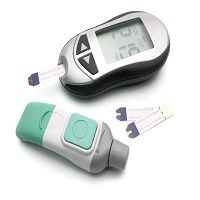Two New Diabetes Guidelines: Minor Changes, Usable Formats
The American Diabetes Association published its revised Standards of Medical Care in Diabetes in April 2015. The American Association of Clinical Endocrinologists (AACE) also issued an updated guideline in April 2015.

The American Diabetes Association published its revised Standards of Medical Care in Diabetes in April 2015. Again, it identifies metformin as the preferred initial agent for type 2 diabetes mellitus when not contraindicated. For patients with contraindications to metformin, the authors recommended initial therapy with a sulfonylurea (SU), thiazolidinedione (TZD), dipeptidyl-peptidase IV (DPP-4) inhibitor, glucagon-like peptide-1 (GLP-1) agonist or sodium-glucose co-transporter 2 (SGLT2) inhibitor.
Dual therapy is indicated in patients who initially present with an HbA1C >9% or in patients who do not reach target after 3 months of monotherapy; the authors indicate that insulin often works when other agents fail. They recommend considering insulin as part of any combination regimen if the patient has severe hyperglycemia, especially if it is symptomatic or catabolic.
Triple therapy is indicated in patients who fail to reach goal after 3 months of dual therapy. Patients with higher HbA1C levels (>8.5%) may need insulin therapy. Insulin therapy is also recommended for patients with highly elevated blood glucose (>300 mg/dL) or HbA1C >10-12%. A convenient diagram outlines these revised recommendations and is available here.
The American Association of Clinical Endocrinologists (AACE) also issued an updated guideline in April 2015. This revision uses a question-and-answer format and augments the previous guideline with recommendations on vaccinations, cancer risks, and management of prediabetes, sleep disorders and depression.
They, too, recommend monotherapy, preferably with metformin, initially and list GLP-1 agonists, DPP-IV inhibitors, SGLT2-inhibitors and alpha-glucosidase inhibitors as acceptable alternatives. Dual therapy, preferably with metformin and a second agent, is recommended for patients who initially present with an HbA1C >7.5% or who don’t reach their target HbA1C on monotherapy within 3 months.
Addition of a third agent may enhance glycemic control to a modest degree, possibly helping patients with an HbA1C<8% who fail to attain target. According to this guideline, a patient whose HbA1C continues to exceed 9% on dual-therapy should be considered for insulin.
Patients initially presenting with an HbA1C > 9% without symptoms of hyperglycemia can be started on dual or triple therapy with non-insulin agents; those with hyperglycemia should be started on insulin therapy (with or without other agents) initially. The AACE algorithm, a companion document to the guideline, is available here.